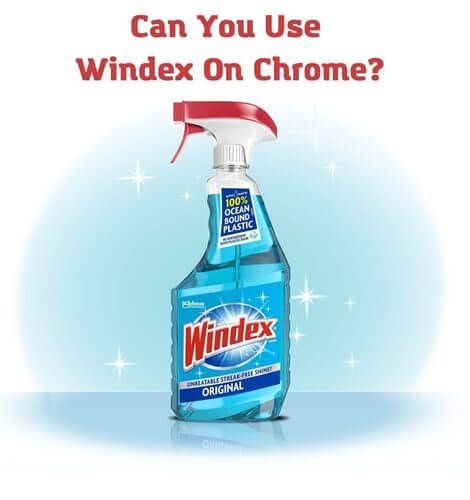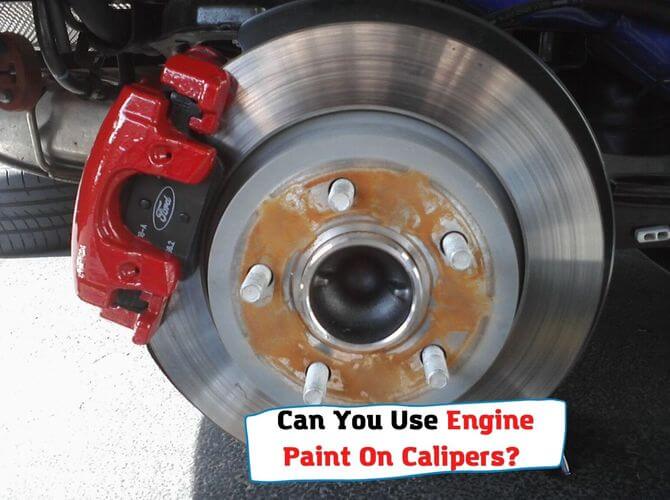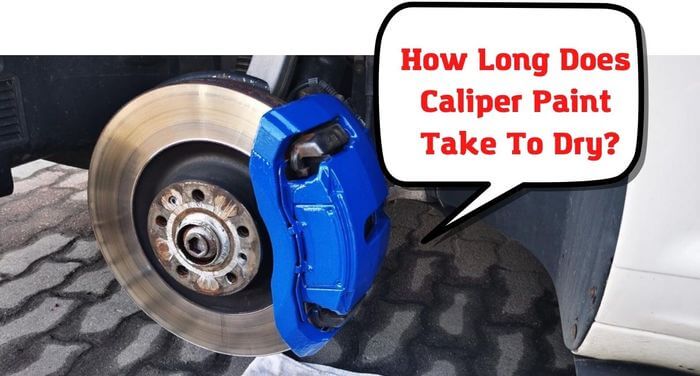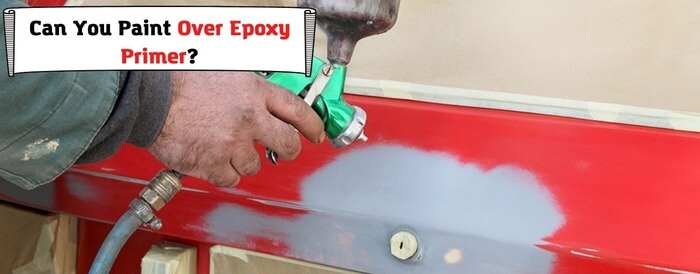When the time comes to paint the engine and calipers on your car, you may be wondering which type of paint to choose. Deciding on the type of paint to go for may be quite tricky. And this article has been prepared to help you out with your decision.
In this article, we will explore the benefits of each type of paint and help you decide which is best for your needs.
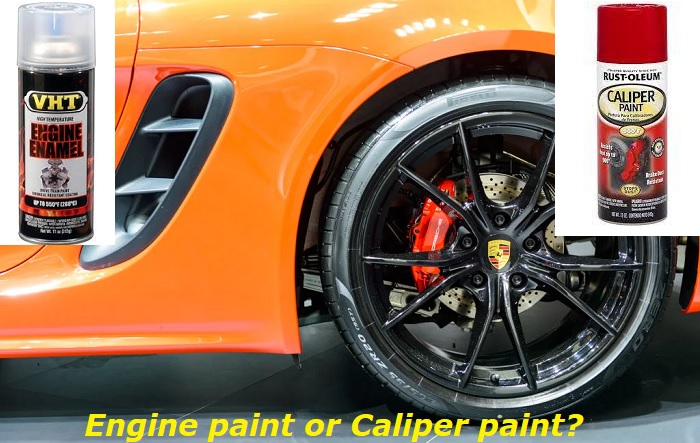
Engine Paint
Whenever you come across the words ‘Engine Paint’, what is being referred to is a pigment that is specifically dedicated to painting your car engine as well as other necessary components.
When you decide to use engine paint for your car, you’ll not only rebrand the surface of your engine but you’ll also be protecting your car engine from rusting.
Highlighted below, the distinctive features engine paints are known for have been listed for you:
Heat Resistance
Engine paints tend to handle high heat levels ranging from 450 to 500°F. Thereby, making them have high heat resistance.
Enamel paints are made with high resistance features to withstand the heat from your car engine while in motion.
Durability
The saying by some folks that glittering things don’t last is not true for engine paints as they are long-lasting despite providing a glossy finish. After you’ve applied engine paint to your vehicle, you can expect it to last for up to 24 months thereby, giving it an edge over caliper paint.
So, if you are looking forward to getting a paint that will be long-lasting, caliper paint is the best choice for you.
Gloss Retention
Have you ever wondered why the car engines of some of your friends look new even after months of being painted? Well, the secret lies in the type of paint used on the engine.
Enamel engine paints give a glossy finish to the surfaces of car engines while also retaining the color of the engine.
Cracking
Using enamel paint will automatically protect your car engine from the effects that result from temperature changes while using your car.
Unlike other paint types, engine paint has a high hardness level so you do not have to worry about your engine paint cracking due to heat or other issues.
Application
Engine paints are packaged in spray bottles for easy usage. With the bottle type, you can try and make all the paint work yourself without renting or buying any expensive equipment.
Damage
Aside from providing a glossy feel to your engine, engine paint will act as a shield for your engine against reactions resulting from the spilling of chemicals like oils, gasoline, and others.
Caliper Paint
Caliper Paint is made to withstand brake dust and extremely high temperatures that can be developed from intense braking conditions. You can easily apply it as well as put it to use as fast as possible, based on the fact that it gets dried at a quicker rate.
Heat Resistance
Caliper paint is made to have a high resistance to intense heat up to 900°F (482°C). It is so strong to the extent that it will not rust even after you expose it to harsh road conditions.
Durability
Caliper paints do not last long if compared to engine paints.
Easy Application
If you are a novice in painting, you don’t have to be bothered about messing up with the painting of your engine or calipers.
Fast Drying
When using caliper paint, you do not have to bother waiting for the paint to get dried. Because caliper paint dries quickly after being applied.
Full Coverage
Painting with caliper paint is one of the less stressful forms of painting as you just need about two or three coats to get full coverage.
So you don’t have to worry about making several coats before you attain full coverage.
The Pros and Cons of Each
To make a better selection between the two paints, we’ve summed up the cons and pros of each painting type in the paragraphs below;
Pros of Engine Paint
- Engine paint allows you the freedom of beautifying your car engine and finish to your taste. You can always go ahead to paint your engine with your favorite paint color.
- Everyone hates rust. Not only do they weaken the properties of the materials, but they also damage the properties. The good news here is by painting your engine with engine paint, you get to reduce every chance of rust on your engine.
- Painting your car with creative bright or dark colors will help up the price of your car in case you decide to sell it.
- Engine paints are designed to be long-lasting.
Cons of Engine Paint
- Getting the perfect color for your engine may be stressful at times.
- It is expensive due to its ability to withstand heat and other of its beneficial features. It is expensive.
Pros of Caliper Paint
- The color selection process when using caliper paint is less stressful when compared to that involved in engine paint.
- It is designed to withstand high-temperature levels.
- It is cost-effective when compared to engine paint.
Cons of Caliper Paint
- It has no protection feature from rust, unlike engine paint.
- Your engine is likely to have its old look even after painting because of the non-availability of the glossy finish.
- It is not long-lasting.
Which Should You Choose?
When it comes to choosing between the two, it ultimately depends on what you are looking for. If you want a long-lasting finish that can withstand high temperatures, then engine paint is the better choice. However, if you are looking for a finish that is less likely to fade or discolor over time, caliper paint is the better option.
Both types of paint have their benefits and drawbacks, so it depends on your individual needs and preferences.
Conclusion
In the end, the decision regarding the type of paint to use for your engine is up to you. Only ensure you go through the features, pros, and cons carefully to make the perfect decision. And see to it that you consider your needs and budget when making your choice.
- Can You Unmix Paint: Techniques, Consequences, Alternatives - February 23, 2024
- Does Primer Need to be Mixed? Effective Primer Application - February 22, 2024
- How to Make Old Paint Usable Again: Retrieving and Preserving Paint - February 21, 2024
